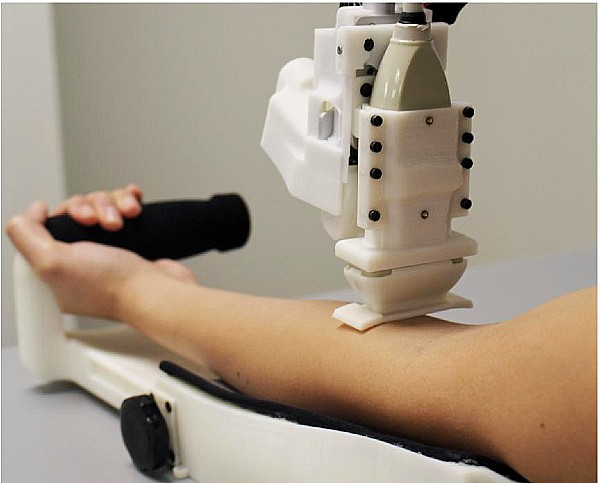The hand-held robot, created by a research team from Rutgers University, was tested in a clinical trial of 31 patients. In individuals with easily accessible veins and in those whose veins were difficult to access, the results were comparable or exceeded clinical standards.
The robot uses ultrasound images to guide the needle to the center of the target vein. Once the blood is drawn a processing module attached to the robot handles samples using a centrifuge-based blood analyzer.
With nearly 1.4 billion blood draws performed annually in the United States, the system is being designed for use in ambulances, emergency rooms, clinics, and hospitals to obtain blood samples safely and reliably, while avoiding multiple needle insertion attempts that cause pain and complications.
The work, reported in the scientific journal TECHNOLOGY1, was led by Martin L. Yarmush, MD, PhD., the Paul & Mary Monroe Chair & Distinguished Professor of Biomedical Engineering at Rutgers University.
The project was funded through R01 grant (EB020036) from the National Institute of Biomedical Imaging and Bioengineering and the NIH-funded Rutgers Biotechnology Training Program (T32GM008339).
1. First-in-human evaluation of a hand-held automated venipuncture device for rapid venous blood draws Josh M. Leipheimer, Max L. Balter, Alvin I. Chen, Enrique J. Pantin, Alexander E. Davidovich, Kristen S. Labazzo and Martin L. Yarmush. TECHNOLOGY Vol. 07, No. 03n04, pp. 98-107
Original post https://alertarticles.info



